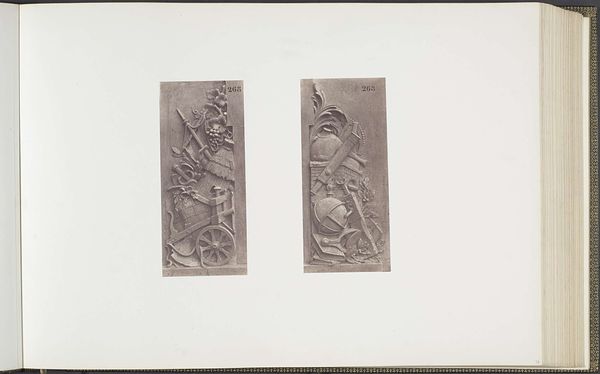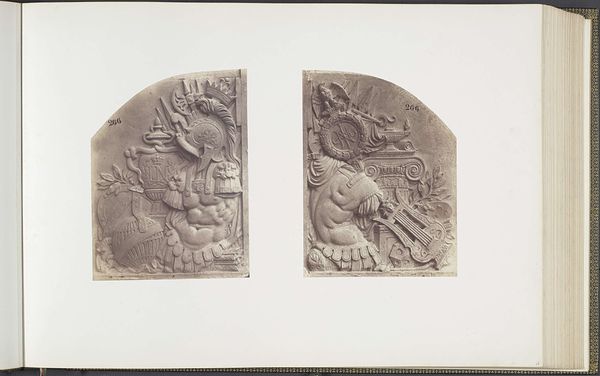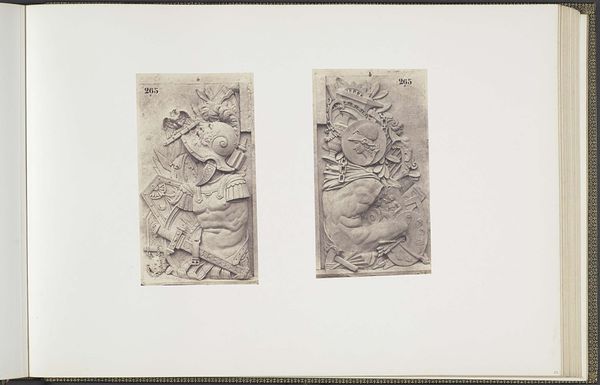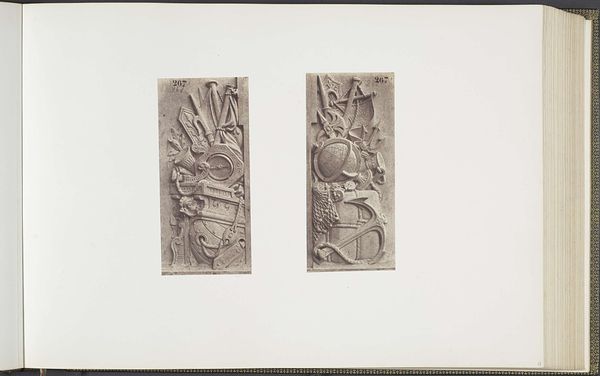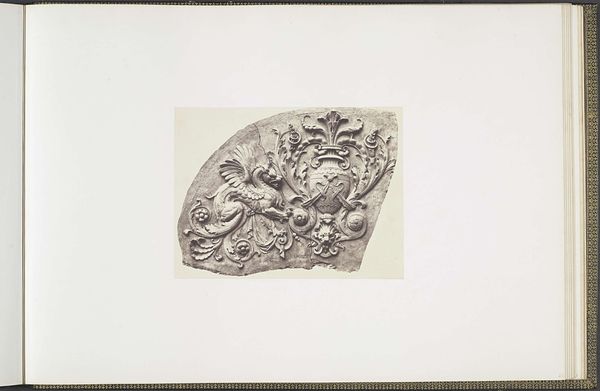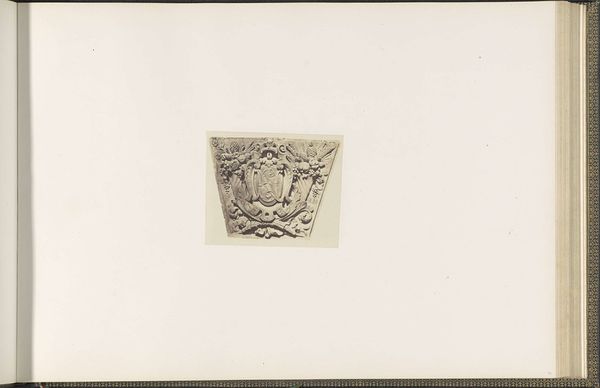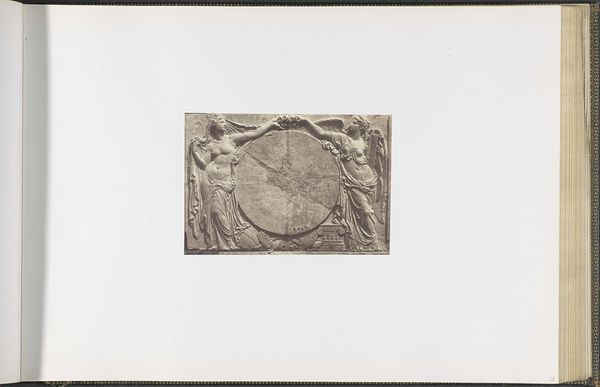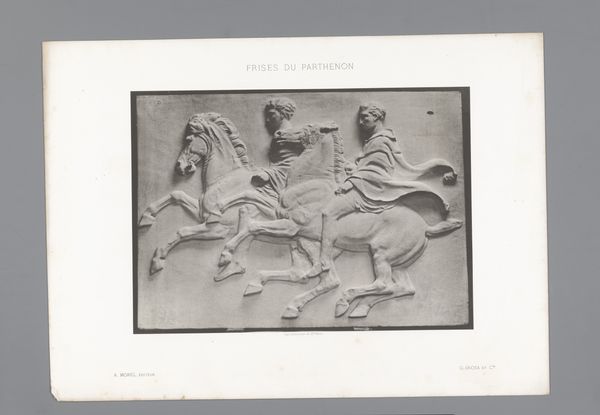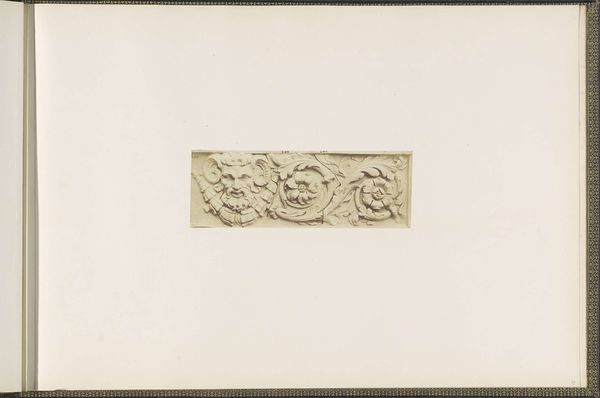
Gipsmodellen voor beeldhouwwerken op het Palais du Louvre: links "La Victoire" door Antoine-Louis Barye en rechts vervaardiger onbekend c. 1855 - 1857
0:00
0:00
edouardbaldus
Rijksmuseum
print, relief, photography, sculpture, plaster
#
neoclacissism
# print
#
relief
#
photography
#
sculpture
#
plaster
#
history-painting
Dimensions: height 378 mm, width 556 mm
Copyright: Rijks Museum: Open Domain
Editor: This photograph by Edouard Baldus, circa 1855-1857, depicts plaster models for sculptures at the Louvre. The monochromatic palette lends a solemn, almost ghostly quality to these emblems of victory and warfare. What strikes me is their stillness – potent symbols of power, now rendered silent. How do you interpret this work? Curator: It's compelling to consider this image within the political context of mid-19th century France. Baldus was documenting these symbols of state power during a period of significant social and political upheaval. Do you notice how these sculptures embody Neoclassical ideals – order, reason, and a harkening back to an imagined glorious past? They’re not just decorative; they're carefully constructed visual arguments intended to legitimize imperial power. What message might these symbols send to the public, particularly given the era's revolutionary undercurrents? Editor: That makes me think about who "victory" truly benefits and what's lost in the pursuit of power. Does photographing these plaster casts—essentially copies—further dilute the "original" meaning and intent? Curator: Precisely! Baldus's photograph introduces another layer of mediation. It invites us to question the relationship between the original artwork, its representation, and the power structures they serve. Furthermore, it is important to understand the photograph as an artwork. Considering its scale, did Baldus intend for these works to operate as a record, or could they be viewed as autonomous objects that generate unique associations and meanings? How can thinking about intersectional power dynamics reframe the original narrative? Editor: I see your point. The photograph immortalizes not just the sculptures, but also the socio-political narrative they represent. Thinking about the piece in those terms definitely enriches the viewing experience. Curator: Agreed. By critically examining the historical context and inherent power dynamics of this photograph, we're not simply appreciating a historical document; we are engaging in a critical dialogue with the past and its reverberations in the present.
Comments
No comments
Be the first to comment and join the conversation on the ultimate creative platform.
